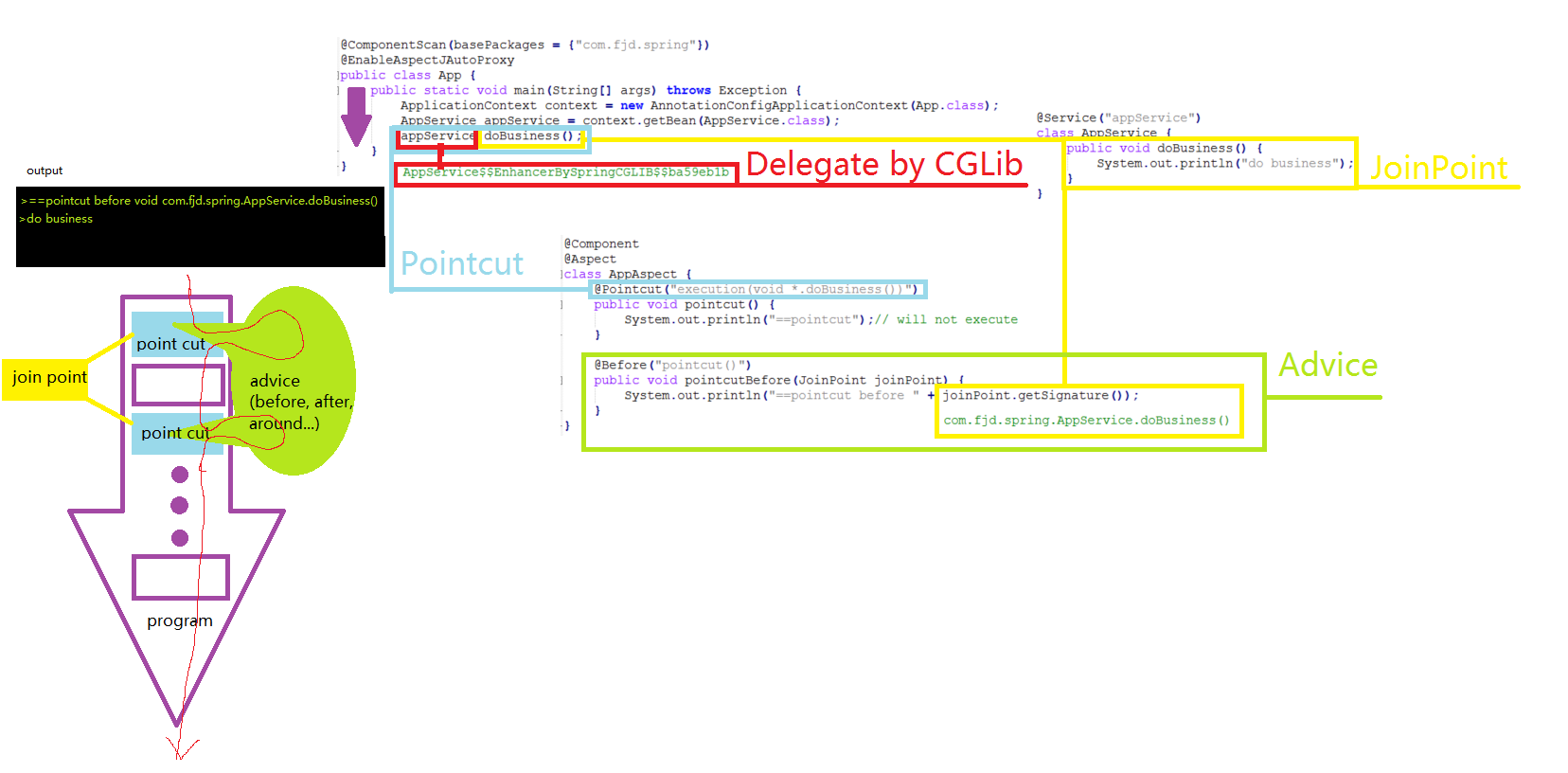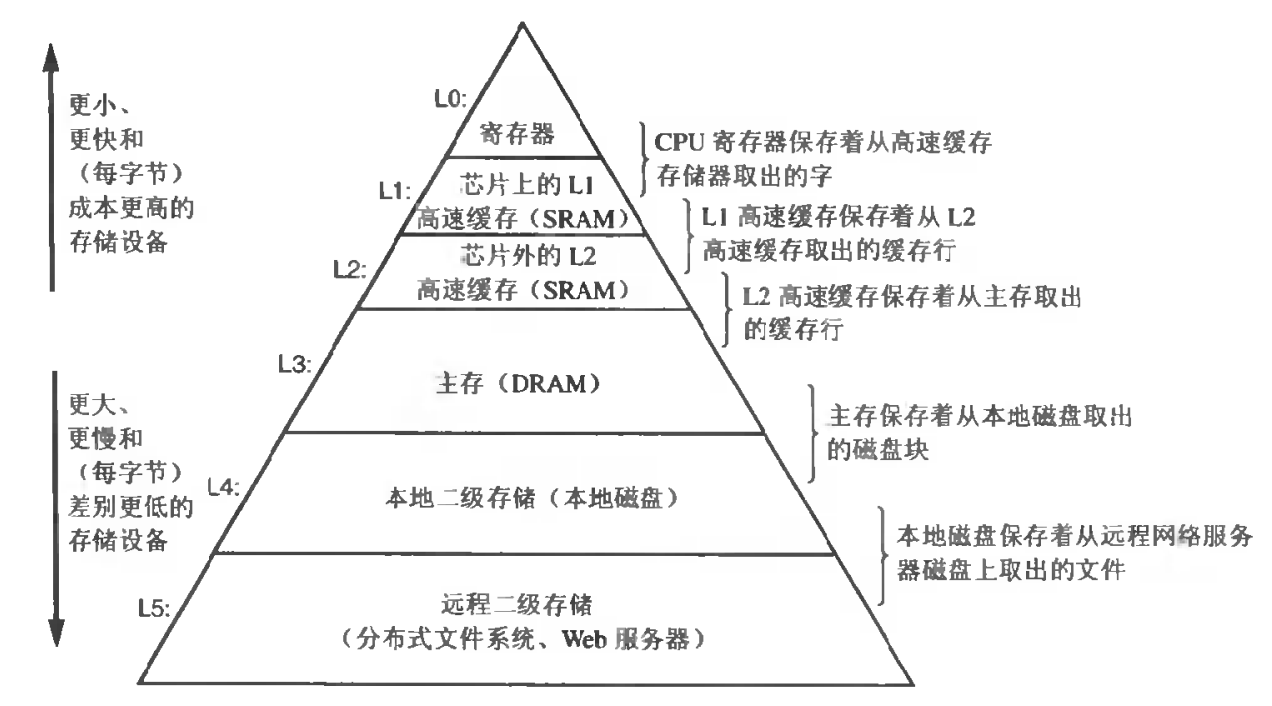Call Stack
1 | at net.sf.cglib.core.CodeEmitter.visitMaxs(CodeEmitter.java:842) |
底层用的是ASM
Enhancer
create()
1 | private Object createHelper() { |
this.superclass= basic.Athis.filter=ALL_ZERO=1
2
3
4
5new CallbackFilter() {
public int accept(Method method) {
return 0;
}
};AbstractClassGenerator.create(Object key)1
2
3
4
5
6
7
8
9
10
11
12
13
14
15
16
17
18
19
20
21
22
23
24
25
26
27
28
29
30protected Object create(Object key) {
try {
ClassLoader loader = this.getClassLoader();
Map<ClassLoader, AbstractClassGenerator.ClassLoaderData> cache = CACHE;
AbstractClassGenerator.ClassLoaderData data = (AbstractClassGenerator.ClassLoaderData)cache.get(loader);
if (data == null) {//这里一般data!=null,所以不走
Class var5 = AbstractClassGenerator.class;
synchronized(AbstractClassGenerator.class) {
cache = CACHE;
data = (AbstractClassGenerator.ClassLoaderData)cache.get(loader);
if (data == null) {
Map<ClassLoader, AbstractClassGenerator.ClassLoaderData> newCache = new WeakHashMap(cache);
data = new AbstractClassGenerator.ClassLoaderData(loader);
newCache.put(loader, data);
CACHE = newCache;
}
}
}
this.key = key;
Object obj = data.get(this, this.getUseCache());
return obj instanceof Class ? this.firstInstance((Class)obj) : this.nextInstance(obj);
} catch (RuntimeException var9) {
throw var9;
} catch (Error var10) {
throw var10;
} catch (Exception var11) {
throw new CodeGenerationException(var11);
}
}AbstractClassGenerator.gen这里只有1
2
3
4
5
6
7
8public Object get(AbstractClassGenerator gen, boolean useCache) {
if (!useCache) {//这里=true,所以一直走else
return gen.generate(this);
} else {
Object cachedValue = this.generatedClasses.get(gen);
return gen.unwrapCachedValue(cachedValue);
}
}Object cachedValue = this.generatedClasses.get(gen);最重要,这个get方法如下,其实就是里面维护了个map当cache,cache不命中就this.createEntry(key, cacheKey, v);1
2
3
4
5public V get(K key) {
KK cacheKey = this.keyMapper.apply(key);
Object v = this.map.get(cacheKey);
return v != null && !(v instanceof FutureTask) ? v : this.createEntry(key, cacheKey, v);
}
一开始进来是关于要创建的class A的,然后走到Object obj = data.get(this, this.getUseCache());的时候recursive call 自己
- 第一次进来key=net.sf.cglib.core.MethodWrapper$MethodWrapperKey
- gen=net.sf.cglib.core.KeyFactory$Generator@27f723
- generatedClasses=
1
2{net.sf.cglib.proxy.Enhancer$EnhancerKey=java.lang.ref.WeakReference@7b69c6ba, basic.A, null, null, {Lnet/sf/cglib/proxy/FixedValue;}, true, true, null=java.util.concurrent.FutureTask@46daef40,
net.sf.cglib.core.MethodWrapper$MethodWrapperKey=java.lang.ref.WeakReference@12f41634} - 返回net.sf.cglib.core.MethodWrapper$MethodWrapperKey$$KeyFactoryByCGLIB$$d45e49f7
- 第二次进来key=basic.A的一大串,gen=Enhancer,
Enhancer.generateClass从ClassVisitor名称来看,就是visitor模式,v= DebuggingClassWriter@10141
2
3
4
5
6
7
8
9
10
11
12
13
14
15
16
17
18
19
20
21
22
23
24
25
26
27
28
29
30
31
32
33
34
35
36
37
38
39
40
41
42
43
44
45
46
47
48
49
50
51
52
53
54
55
56
57
58
59
60
61
62
63
64
65
66
67
68
69
70
71public void generateClass(ClassVisitor v) throws Exception {
Class sc = this.superclass == null ? Object.class : this.superclass;
if (TypeUtils.isFinal(sc.getModifiers())) {
throw new IllegalArgumentException("Cannot subclass final class " + sc.getName());
} else {
List constructors = new ArrayList(Arrays.asList(sc.getDeclaredConstructors()));
this.filterConstructors(sc, constructors);
List actualMethods = new ArrayList();
List interfaceMethods = new ArrayList();
final Set forcePublic = new HashSet();
getMethods(sc, this.interfaces, actualMethods, interfaceMethods, forcePublic);
List methods = CollectionUtils.transform(actualMethods, new Transformer() {
public Object transform(Object value) {
Method method = (Method)value;
int modifiers = 16 | method.getModifiers() & -1025 & -257 & -33;
if (forcePublic.contains(MethodWrapper.create(method))) {
modifiers = modifiers & -5 | 1;
}
return ReflectUtils.getMethodInfo(method, modifiers);
}
});
ClassEmitter e = new ClassEmitter(v);
if (this.currentData == null) {
e.begin_class(46, 1, this.getClassName(), Type.getType(sc), this.useFactory ? TypeUtils.add(TypeUtils.getTypes(this.interfaces), FACTORY) : TypeUtils.getTypes(this.interfaces), "<generated>");
} else {
e.begin_class(46, 1, this.getClassName(), (Type)null, new Type[]{FACTORY}, "<generated>");
}
List constructorInfo = CollectionUtils.transform(constructors, MethodInfoTransformer.getInstance());
e.declare_field(2, "CGLIB$BOUND", Type.BOOLEAN_TYPE, (Object)null);
e.declare_field(9, "CGLIB$FACTORY_DATA", OBJECT_TYPE, (Object)null);
if (!this.interceptDuringConstruction) {
e.declare_field(2, "CGLIB$CONSTRUCTED", Type.BOOLEAN_TYPE, (Object)null);
}
e.declare_field(26, "CGLIB$THREAD_CALLBACKS", THREAD_LOCAL, (Object)null);
e.declare_field(26, "CGLIB$STATIC_CALLBACKS", CALLBACK_ARRAY, (Object)null);
if (this.serialVersionUID != null) {
e.declare_field(26, "serialVersionUID", Type.LONG_TYPE, this.serialVersionUID);
}
for(int i = 0; i < this.callbackTypes.length; ++i) {
e.declare_field(2, getCallbackField(i), this.callbackTypes[i], (Object)null);
}
e.declare_field(10, "CGLIB$CALLBACK_FILTER", OBJECT_TYPE, (Object)null);
if (this.currentData == null) {
this.emitMethods(e, methods, actualMethods);
this.emitConstructors(e, constructorInfo);
} else {
this.emitDefaultConstructor(e);
}
this.emitSetThreadCallbacks(e);
this.emitSetStaticCallbacks(e);
this.emitBindCallbacks(e);
if (this.useFactory || this.currentData != null) {
int[] keys = this.getCallbackKeys();
this.emitNewInstanceCallbacks(e);
this.emitNewInstanceCallback(e);
this.emitNewInstanceMultiarg(e, constructorInfo);
this.emitGetCallback(e, keys);
this.emitSetCallback(e, keys);
this.emitGetCallbacks(e);
this.emitSetCallbacks(e);
}
e.end_class();
}
}
sc=basic.A
methods 拿到了所有A的方法,包括Object里继承的
methods.toString()=[
test(Ljava/lang/String;)Ljava/lang/String;,
test1(Ljava/lang/String;)Ljava/lang/String;,
equals(Ljava/lang/Object;)Z,
toString()Ljava/lang/String;,
hashCode()I,
clone()Ljava/lang/Object;]
ClassEmitter e就是新生成的代理的信息
e.classInfo.toString()=basic.A$$EnhancerByCGLIB$$a593fb86
basic.A$$EnhancerByCGLIB$$a593fb86 extends A
e.fieldInfo={CGLIB$STATIC_CALLBACKS=net.sf.cglib.core.ClassEmitter$FieldInfo@d45d4ff9, CGLIB$CALLBACK_0=net.sf.cglib.core.ClassEmitter$FieldInfo@6cada385, CGLIB$THREAD_CALLBACKS=net.sf.cglib.core.ClassEmitter$FieldInfo@15b3f091, CGLIB$BOUND=net.sf.cglib.core.ClassEmitter$FieldInfo@4050e674, CGLIB$FACTORY_DATA=net.sf.cglib.core.ClassEmitter$FieldInfo@861434f0}
callbackTypes.toString()=[Lorg.objectweb.asm.Type;@50d0686]就是Lnet/sf/cglib/proxy/FixedValue;然后就交给FixedValueGenerator去generate
ASM
ASM的包里面大量应用了visitor模式,visit package, class, field, method, code block, frame, TryCatchBlock, MultiANewArrayInsn, LocalVariable, LineNumber, MaxsEnd, TypeAnnotation, Parameter.反正就是很细
cglib里也有同一套,加了点null判断什么的,然后就调用了ASM对应的visit方法。
参考cglib的MethodVisitorTee和asm的MethodWriter
这些XXWriter里就是直接写字节码的了,充斥了各种ByteArray,还有硬编码的字符
不知道Frame是干什么用的,里面的execute方法很震撼。。。









